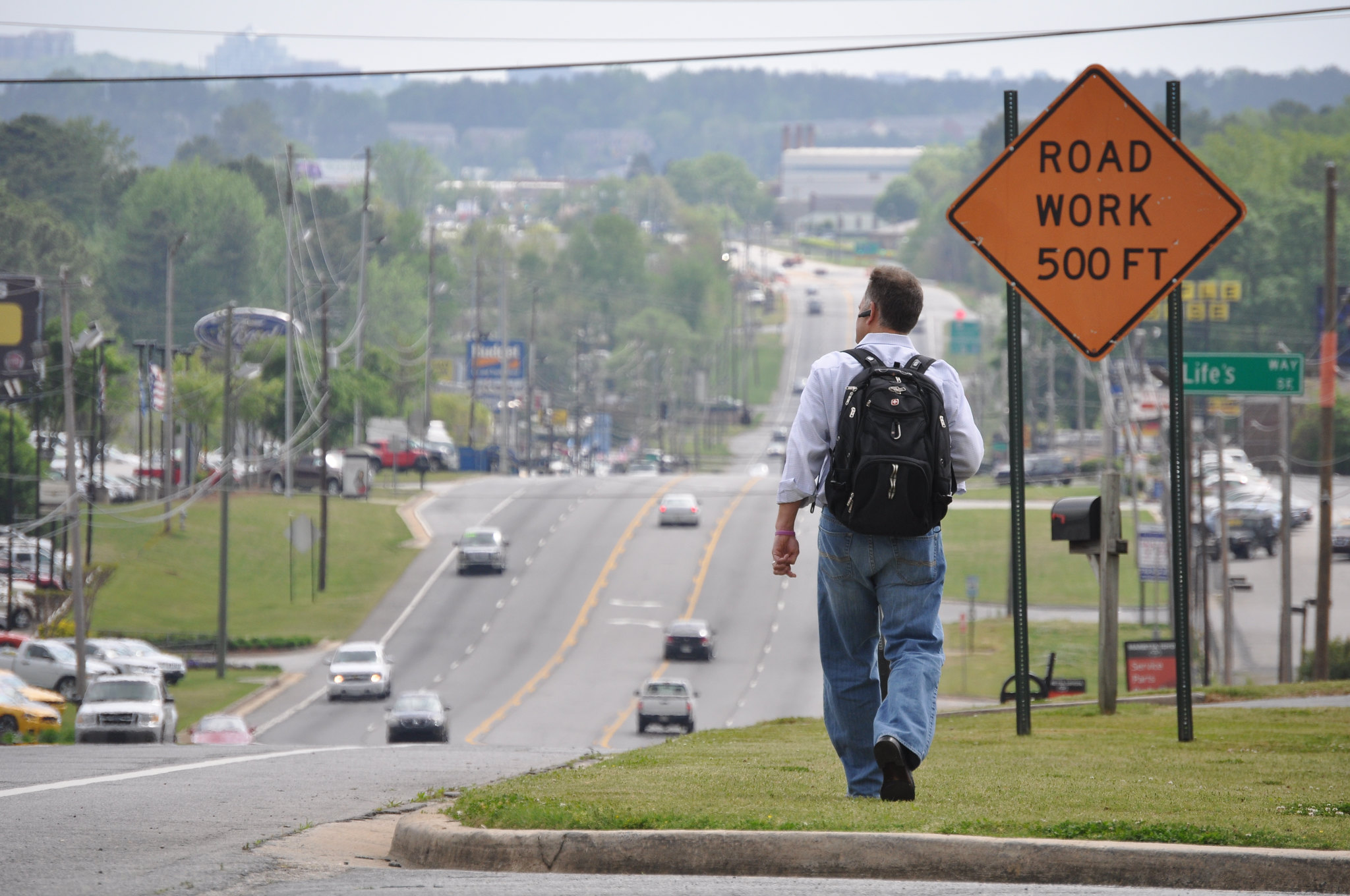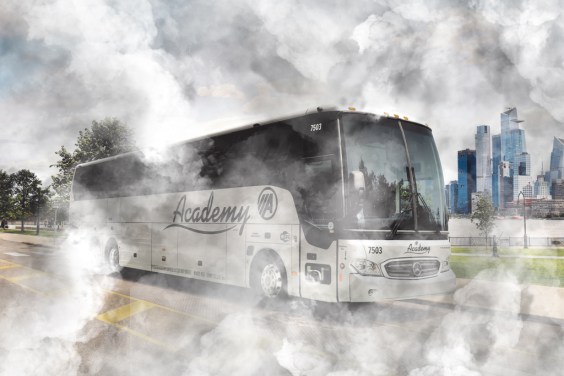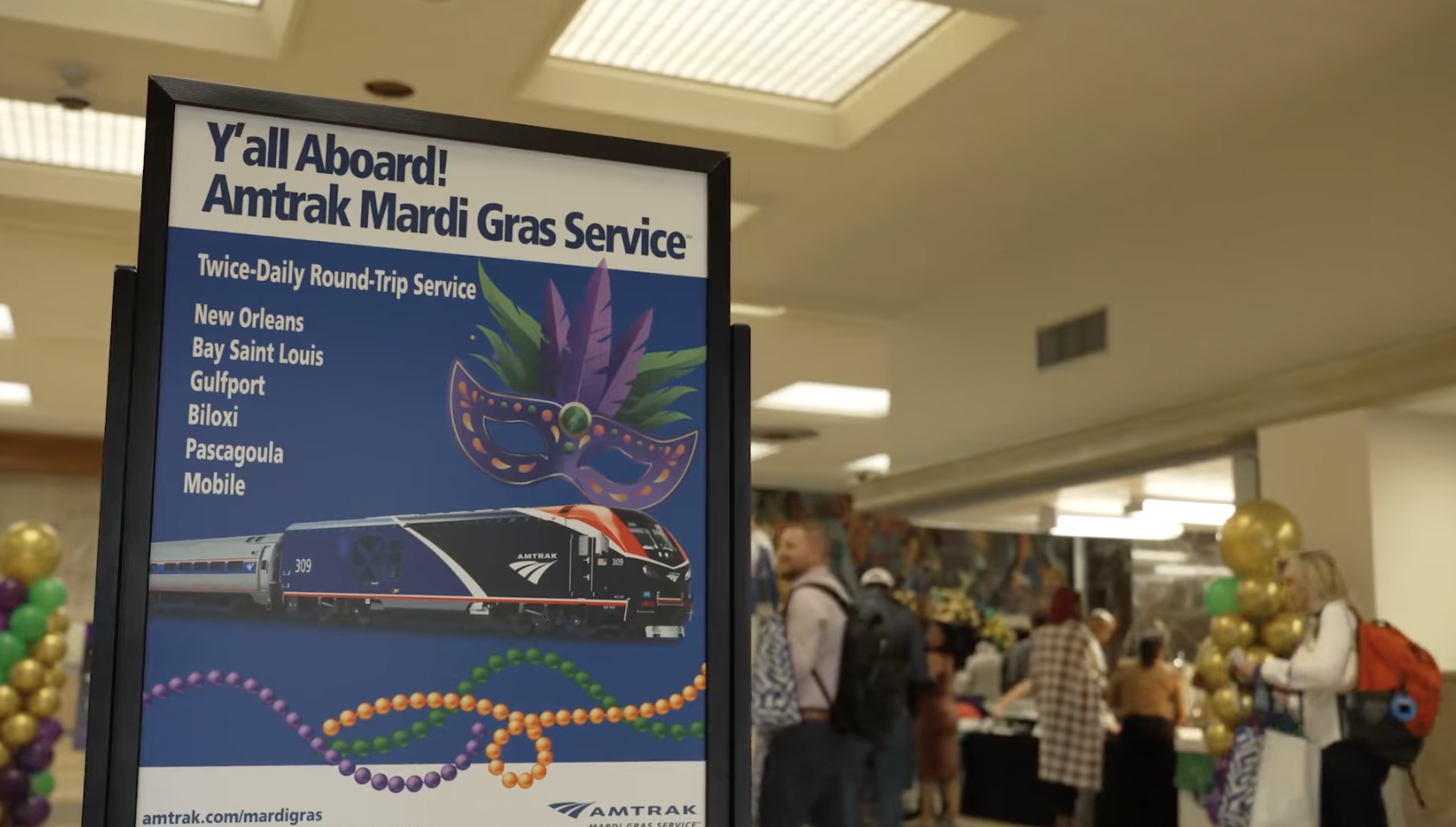Editor's note: a version of this article originally appeared on the Vision Zero Network and is republished with permission.
More than a decade into the U.S. Vision Zero movement, we know what works to save lives on our streets — and we know where the worst dangers still lie.
Within the hundred largest metro areas, nearly two-thirds of traffic deaths happen on State-Owned Roads, even though these roads make up just 14 percent of the total roadway network.
These legacy highways are state roads designed long ago that no longer serve the safety needs of the local communities that grew up around them. In many cases, they were designed to connect regions, move freight or serve as highway alternatives before we had an Interstate Highway System.
But over time, the world around them changed. Now, they often function as de facto main streets, urban arterials or rural access roads. They serve very different purposes today – including local traffic, people walking and biking, school buses and delivery vans – without having been redesigned for these uses.
Their legacy status is more than just historical; it reflects a complicated web of ownership, responsibility and standards. Depending on the state, control over these roads may rest with local jurisdictions, remain with the state, or be shared between cities, counties, and state agencies, depending on state law. That patchwork often makes it hard to fix obvious safety problems, even when communities are ready to act.
Where communities invest in safe roadway design and systemic change, lives are saved. However, unless we tackle the arterials running through our cities, these legacy highways will continue to endanger the communities they bisect.
The good news: some states are stepping up to show how they can use their significant powers for good. Ohio and Washington offer two compelling examples — grounded in different governance structures, but united by their willingness to rethink speed and design on state-owned roads.
Ohio: Arterials Are the Next Frontier — and the State DOT Knows It
Nearly half of all serious traffic injuries in Ohio occur on just eight percent of the roadway network. These are state-owned principal and minor arterials: fast-moving, high-volume roads that cut through cities and suburbs alike. This is a common trend in states across the country, and the Ohio Department of Transportation (ODOT) is not shying away from this reality.
“The next gains we’re going to get in safety — saving lives — will be on arterials,” says Michelle May, ODOT’s Highway Safety Program Manager. “And that’s going to mean dealing directly with speed and design.”
Ohio is a “home-rule” state, where cities maintain the roads within their boundaries. But if local leaders want to use state or federal funding to make roadway improvements, they typically follow ODOT’s design standards or need to request a waiver. That’s why it matters that ODOT is working to give local governments more flexibility, especially on setting speed limits and street design.
Over the past five years, ODOT has been working across offices and divisions to shift guidance, procedures and policies around speed and design decisions to focus more on safety and the needs of all road users. Local governments have been heavily involved in guiding these efforts. Examples include:
- Moved to context-sensitive speed limits, particularly in places where people are likely to be walking and biking. Here’s more about why design speed is important.
- Launched a $25 million Target Speed Pilot, testing low-speed design strategies like curb bump-outs, narrowed lanes and gateway treatments to support 25 mph travel in urban areas.
- Is developing a new Context Classification Guide to better align roadway design and speed with land use and community needs. To ensure the guide is applied in practice, ODOT is working across offices and divisions to embed context into design, project planning, and target speed policies.
- Prioritized projects in Vision Zero plans for funding, including in Columbus, Cleveland, Cincinnati and Toledo.
The partnership works in both directions: ODOT’s Target Speed Pilot was informed by Columbus’ Vision Zero efforts to transform dangerous streets. The most dramatic safety gains came from curbing the most egregious, life-threatening speeds — like on Sullivant Avenue, where occurrences of speeds in excess of 50 mph on a 35 mph corridor dropped by over 90 percent, and total crashes fell by 50 percent.

The safety needs in local Vision Zero communities and at the state level are closely linked. For instance, local safety planners recognize that the arterials are some of the most dangerous in their own communities, and they need state help. Meanwhile, the State's overall safety goals benefit when they focus on improving these arterials. Michelle May credits Vision Zero cities’ data and collaboration for informing ODOT’s approach.
“It’s not a coincidence that in Ohio, we’ve seen three straight years of declining traffic deaths and serious injuries. Our Vision Zero connections are a critical part of helping us meet our statewide safety goals.”
Designing for safe speeds saves lives — and in Ohio, that work is underway. While Ohio law establishes statutory speed limits, ODOT has the authority to approve deviations through speed studies. For several years, ODOT has partnered with local governments to update these studies and expand the tools available to lower speeds — especially on streets where people walk, bike, and cross daily.
ODOT started by allowing communities to use 50th percentile speeds in place of the traditional 85th percentile, better reflecting land use and safety goals. It then adopted USLIMITS2 to provide additional flexibility. These shifts align with national guidance which emphasizes context and risk over driver behavior alone. Eventually, ODOT’s new Context Classification Guide will offer another tool for establishing safe posted speeds grounded in land use and community needs.
ODOT’s work surfaces another common challenge across states: many legacy highways remain under state control even as their primary function has shifted to more local use, yet there is no clear funding mechanism for redesign or jurisdictional transfer. To help consider solutions, ODOT is participating in national research on Roadway Cross-Section Reallocation (NCHRP 1036), which explores new frameworks for evaluating street design trade-offs, particularly in corridors prioritized for safety and transit.
In short, Ohio’s DOT is doing more of what all state transportation leaders need to do: listening to Vision Zero cities, trusting the data, and treating speed and design as non-negotiables in the fight for safe streets.
Washington State: Treating Safety as a Megaproject
In Washington State, someone is killed on the roads every 13 hours. Nearly half of these premature deaths occur on state-owned roadways and the vast majority are on roads running through cities, towns and neighborhoods. These are “main street highways” or “stroads”: fast-moving, multi-lane corridors that split communities and endanger people walking, biking and driving alike.
Washington State DOT (WSDOT) has embraced the Safe System Approach endorsing the Safe System Approach and a Target Zero Plan to drive safety statewide. Former WSDOT Secretary Roger Millar has spoken publicly about the need to address safety head-on on these dangerous arterials, which have disproportionate, negative safety and equity impacts. WSDOT has impressive data about where changes are needed, what it will cost and the difference it will make. The cost of systemic safety investments is far lower than the price of inaction — or of responding in piecemeal ways after lives are lost. But until now there hasn’t been a clear statewide proposal to actually fix them.
“It’s happening now, something horrible happens, and the legislature directs us to work on State Route 7 in Parkland, or we’ve got a little bit of money to work on a small part of Aurora, but we really need to be systematic about it.” As Millar described in 2024: “We’ve got 1,000 miles, let’s get started.”
That’s changing.
Transportation Choices Coalition (TCC), a nonprofit working across Washington, is calling for a $1.5 billion Megaproject for Safety to redesign the most dangerous state-owned urban arterials — beginning with a $150 million/year investment over the next decade. Notably, these streets are also home to the state’s busiest bus routes. This data-driven campaign marks a shift from problem acknowledgment to actionable, investment-ready solutions.

The proposal isn’t just about ideas — it’s backed by data, community support and precedent. One vision is to model it, the Megaproject for Safety on how Washington invests in community colleges, to provide WSDOT’s regional divisions with a predictable, recurring allocation to make transformative safety upgrades.
The following examples in Washington show what’s possible when advocacy, agency leadership and legislative action align to address the public road safety’s concerns. They include:
- Securing $100 million in the 2027–2029 state budget to fund safety improvements on WSDOT’s main street highways, building on years of TCC-led advocacy. This $100 million investment is a significant step forward, though still a fraction of the $1.5 billion identified as needed.
- Supporting redesign of Seattle’s Aurora Avenue, one of Washington’s deadly state highways, to improve safety and mobility; and combining funding from the legislature’s Move Ahead Washington and Seattle transportation funds. TCC is working to motivate similar investments in safety in lower-income corridors statewide.
- Mobilizing legislative support through on-the-ground engagement, including events like the Spokane Megaproject for Safety Walk & Talk, and successfully championed sidewalk and walkability funding across multiple legislative sessions.
- Developing a map that highlights dangerous state-owned “main street highways” - dangerous routes as safety investment opportunities. The map gives legislators something tangible they can “buy” - a visible, fundable problem - and a chance to show measurable progress to their constituents.
- Building a broad, bipartisan coalition for change by regularly briefing rural and urban stakeholders. Transportation Choices Coalition is also partnering with CleanRIDES and Vision Zero Network to share these lessons nationally.
This investment builds on years of organizing to elevate state-owned arterials as safety priorities.
The vision in Washington is justifiably bold: Treat these safety fixes as essential infrastructure investments, on par with highways and bridges. Create long-term, predictable funding. And design for people to get around their communities safely, no matter their age or income level.
“The state needs to build the muscle to be able to make these streets safer,” says Kirk Hovenkotter, TCC Executive Director. “State DOTs will repeat what they are good at, and we have to get them good at making their main street highways places we can be proud of. The state is the owner of these roadways. The state owns these roadways and our lives are in their hands, especially in under-resourced communities.”
As other states wrestle with how to address deadly arterials, Washington could become a national model. But only if leaders seize the moment — and fund it.
The road ahead
Washington and Ohio are stepping up to acknowledge and address widespread, predictable, and preventable problems on state-owned roads. Texas, by contrast, has yet to take on this challenge despite an urgent need. Someone is killed every hour on Texas roadways, and while Austin reduced fatalities on locally managed roads by 20% between 2016 and 2022, deaths on state-owned roads rose by 98% in the same period. These and other city-led Vision Zero efforts show that meaningful safety investments are possible and save lives.
Without State DOT action on the high-speed arterials they manage, preventable traffic deaths and injuries will continue unchecked. Ohio and Washington show what’s possible when leadership, advocacy, and coordination come together to focus on these dangerous roads. Their work is grounded in data and a commitment to rethinking the role of high-speed arterials in our communities.
Federal leaders also recognize the dangers of these arterials. Fixing legacy highways has been a focus of former U.S. Representative Earl Blumenauer and others for decades. USDOT grant programs, including Safe Streets and Roads for All (SS4A), are helping some communities modernize legacy highways with safer, more community-centered designs. If we want to address the known problems on these roads, leaders, including advocates, should work to preserve programs described in this 2024 FHWA funding summary. While safety is a major reason to improve legacy highways, there are many additional benefits, as described in this article in Cityscape, a journal of the U.S. Department of Housing and Urban Development.
The federal government is urging states to act on non-freeway arterials, where more than half of U.S. roadway fatalities occur, nearly two-thirds of which are pedestrian deaths. This July 2025 USDOT letter to governors highlights the urgent need to improve safety on these roads.
The data is clear: we face an outsized safety challenge on state-owned arterials across the nation. Ohio and Washington show that meaningful, statewide action is possible, and cities like Columbus and Seattle show the results. Meeting this challenge will require cities, states, and advocates working together to transform these dangerous arterials into safe streets for everyone.






